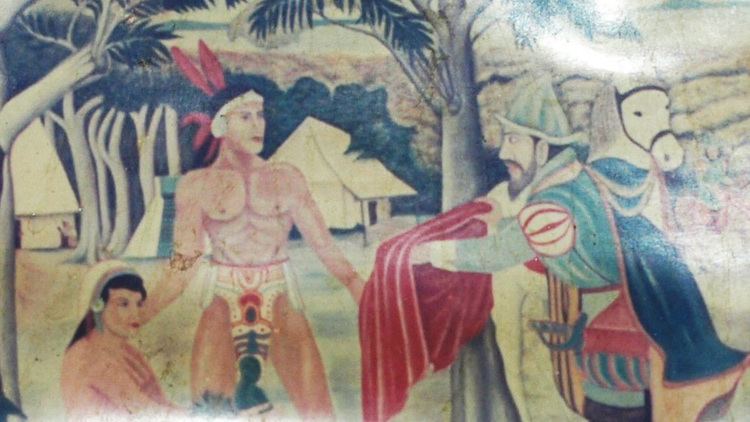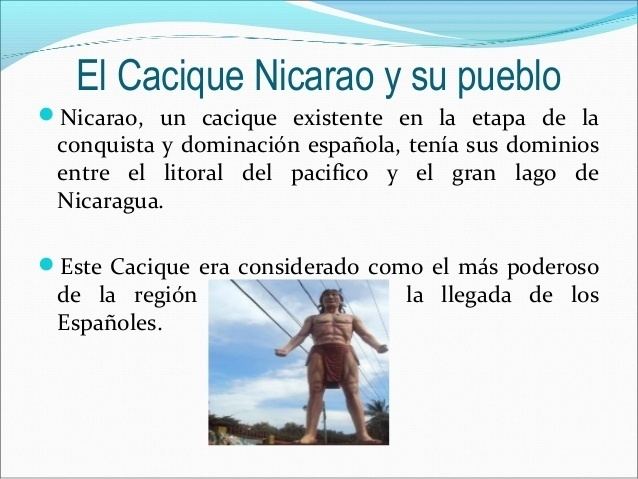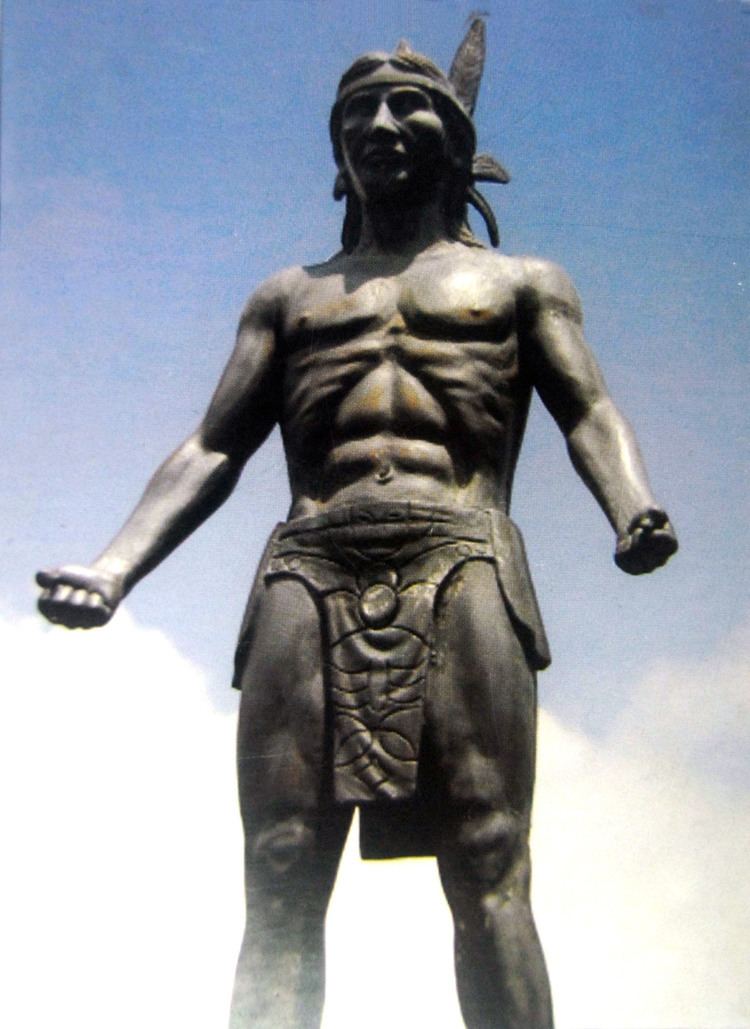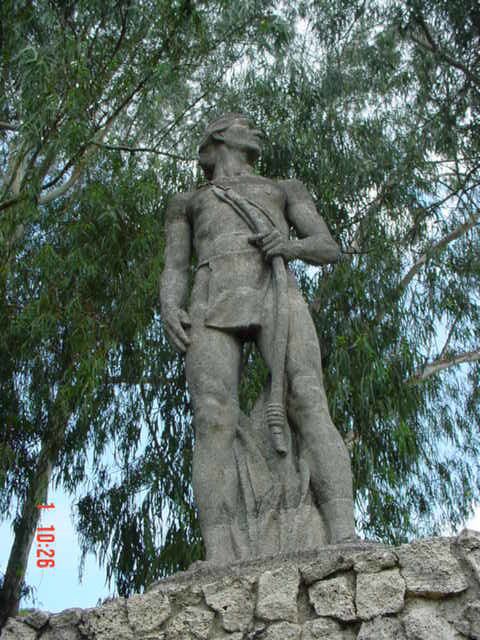 | ||
Nicarao was the most important cacique or Indian chief at the arrival of the Spanish conquistadors in what today is Southeastern Nicaragua in 1522, although Columbus, on his 4th and last voyage, had already set foot in Nicaragua in 1502. According to some historians, the modern name Nicaragua is the Hispanized version of the phoneme Nicarao where the "o" has been dropped and the "gua" added to create the name of the country.
Contents

Cacicazgo

The area of Nicarao's cacicazgo extended from the Isthmus of Rivas in Nicaragua next to Lake Nicaragua to Guanacaste Province in modern Costa Rica. The principal settlement Nicaraocallí (also called Nequecheri), is believed to have been situated near the modern lake port of San Jorge in Rivas Department, Nicaragua.
Expedition of Gil González

In 1522, Gil González Dávila left Panamá with 100 men, beginning the first incursion into the territory of modern Nicaragua and Costa Rica.

Andrés de Cereceda, the expedition's (treasurer?), wrote in his log the names of the caciques of the villages where gold was collected. In the gulf of Nicoya (northern Costa Rica they found the largest village they had visited so far, which was ruled by the cacique Chorotega. Since then, linguistic sources have been based on this cacique, using his name as an eponym to encompass a number of villages which had cultural and linguistic similarities despite being physically separated.

